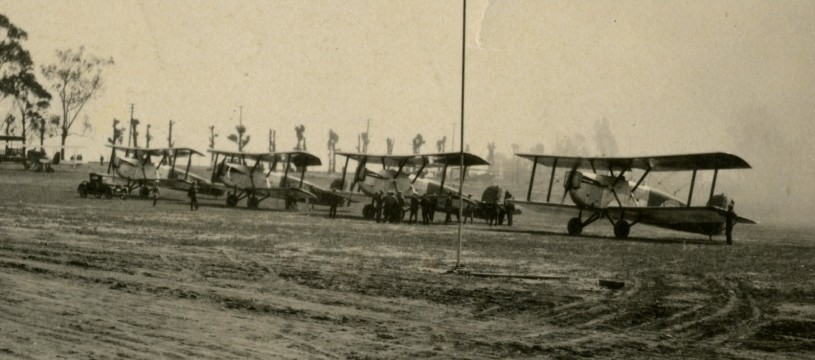Remembering the Douglas World Crusier's First Flight Around the World
Marking 100 Years since the Douglas World Cruisers circled the globe

Published on September 4, 2024
After World War I, aviation was still a fledgling mode of travel. Every attempt to fly around the world had failed, but the Army Air Service, forerunner of the U.S. Air Force, still saw possibility and America’s future in the skies. In 1923, the Air Service announced a plan to circumnavigate the globe by air for the first time in history.

Aviation trailblazer Donald Douglas won the contract to build the new plains within 45 days of the announcement. Manufactured in Santa Monica, the planes were outfitted to fly in all weather conditions. The five single-engine biplanes purchased for the journey (one for testing, four to make the trip) could employ both wheels and floaters for landing and taking off on land or over water, a crucial tool for the varying topography across the 27,553-mile voyage. The pilots would face the harrowing flight in open cockpits and without radio equipment to cut down on weight. Instead of roofs or windows—let alone pressurized cabins—the pair of mechanics and pilots flying each plane had only heavy fur-lined suits to protect them against the wind, rain, and snow that would pelt them over the course of the flight.

Four planes, dubbed Douglas World Cruisers, took off from what is now Santa Monica Airport on March 17, 1924: the Boston, Seattle, Chicago, and New Orleans began a series of test hops from Santa Monica to Sacramento, continuing up the West Coast for the official first leg: from Seattle to Prince Rupert in British Columbia. Where earlier failed attempts had taken an easterly route, the Douglas World Cruisers challenged convention by heading westward towards circling the globe.

Underscoring the danger of the flight, a series of mechanical issues and terrible weather would keep individual planes off schedule, and the Seattle crashed into a mountain on the Alaskan peninsula about a month into the endeavor. The crew trekked for eleven days in the wilderness from the crash site to civilization at Port Moller.

Poor weather frequently delayed hops, but on May 22, the remaining World Cruisers arrived in Japan to local fanfare as the first pilots to make it over the Pacific Ocean. The teams rushed ahead of monsoon season, battling through sweltering heat and major mechanical fixes on the ground in India, before moving through the Middle East and Europe, landing in Paris in time for Bastille Day on July 14. It was en route to Iceland that engine failure grounded the Boston. Despite being towed by a Navy destroyer, the Boston would ultimately sink, and the prototype fifth biplane would take its place as the Boston II.
The New Orleans
After 175 days, just two of the original aircraft survived to complete the epic journey. On September 28, the Chicago and the New Orleans arrived in Seattle to worldwide acclaim, ushering in new possibilities for air travel and rallying the spirit of adventure in the skies. The New Orleans would finally land at the Natural History Museum of Los Angeles County as part of its History Collection, continuing its journey of inspiration for around 30 years at NHM. It was then on loan for a 20-year stint at the National Museum of the United States Airforce at the Wright-Patterson Air Force Base outside of Dayton, Ohio, and then a roughly 30-year display at Santa Monica’s Museum of Flying for a decade until that museum's closure in 2002.

“The Museum’s intention has always been to display the New Orleans someplace locally,” said Beth Werling, NHM Collections Manager of History, at an event marking the centennial of the World Cruisers’ initial departure. “We’re at the beginning stages and [we’re] listening to the new vision for the Santa Monica airport and how they intend to revitalize not just as a center for aviation in the 21st century, but also as more of a community center, which really taps into what NHM is trying to do as far as taking history, taking our collections outside the museum walls and into the community and making it more of a dialogue, rather than just a one-sided feeding of information.”
The plans are still taking shape, but the New Orleans may once again soar in the public imagination. It’s certainly overcome more harrowing journeys before.

